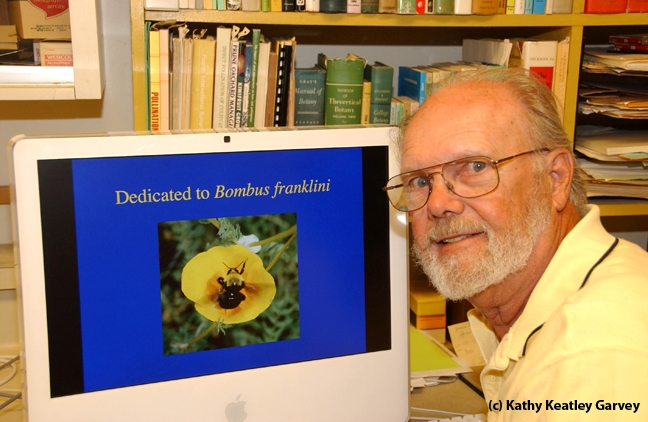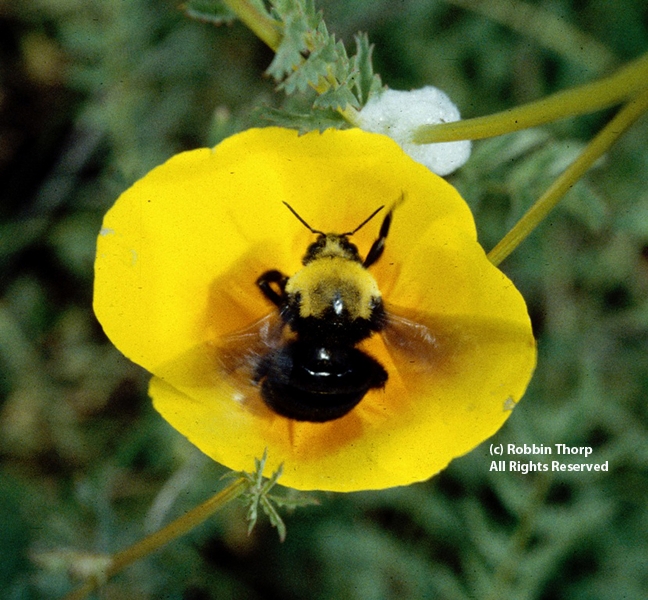The world's "100 Most Endangered Species" are back in the news again, and well they should be.
Back in 2012, The International Union for Conservation of Nature (IUCN) and the Zoological Society of London released a list of the 100 Most Threatened Species when the IUCN World Conservation Congress met in South Korea.
It's good to see the list is still making the rounds. A slide show posted this week by Huffington Post should keep it in the spotlight. Last year Live Science listed them.
That means more attention to Franklin's bumble bee (Bombus franklinii), a critically imperiled bumble bee that UC Davis native pollinator specialist Robbin Thorp has monitored since 1998.
Thorp, emeritus professor of entomology, says the distinctively marked bumble bee has the most restricted range of any bumble bee in the world. Its habitat is--or was--a small area of southern Oregon (Douglas, Jackson and Josephine counties) and northern California (Siskiyou and Trinity counties).
Franklin’s bumble bee frequents California poppies, lupines, vetch, wild roses, blackberries, clover, sweet peas, horsemint and mountain penny royal during its flight season, from mid-May through September. It collects pollen primarily from lupines and poppies and gathers nectar mainly from mints.
Thorp and the Xerces Society for Invertebrate Conservation are the forces behind the Franklin's bumble bee campaign to find it and protect it. See the Xerces website for more information about the bee.
Thorp sighted 94 in 1998; 20 in 1999; 9 in 2000 and only 1 in 2001. Sightings increased slightly to 20 in 2002, but dropped to 3 in 2003. Thorp saw none in 2004 and 2005; one in 2006; and none since. Now scores of people from all walks of life are looking for it, but no one has found it.
Franklin's bumble bee is one of several insects on the worldwide list. The other species include several butterflies, Actinote zikani, Parides burchellanus and Pomarea whitneyi; the Seychelles Earwig (Antisolabis seychellensis); Beydaglari Bush-cricket (Psorodonotus ebneri); and a damsel fly (Risiocnemis seidenschwarzi).
Or Franklin's bumble bee.
Attached Images:

